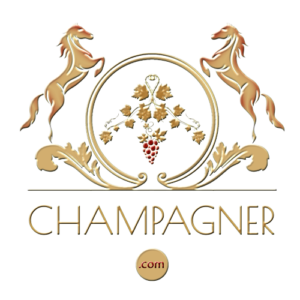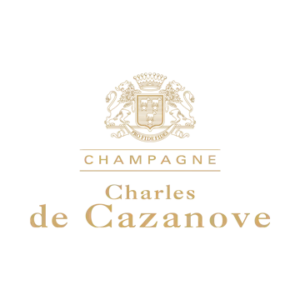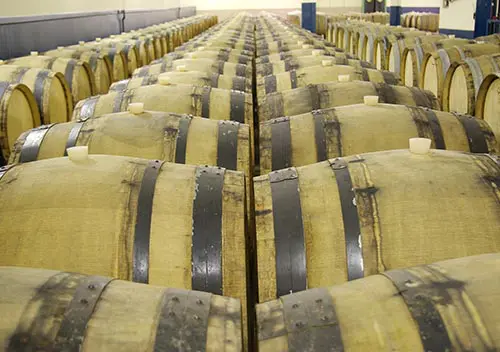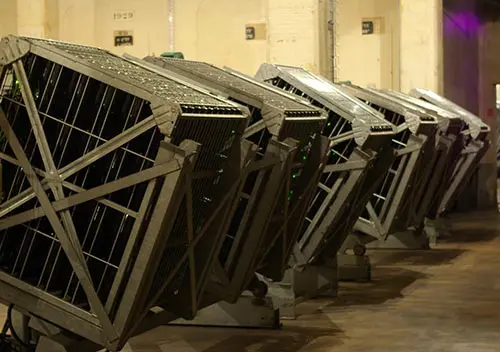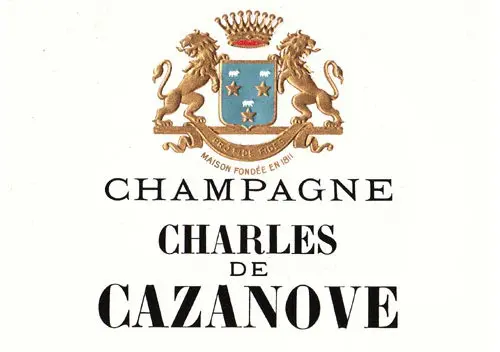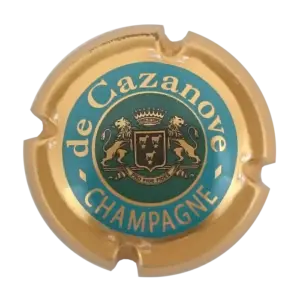Charles de Cazanove Champagne
Between tradition and modernity: the history and development of Charles de Cazanove Champagne
Charles de Cazanove Champagneone of the oldest brands in the Champagnehas proven over the last two centuries that it is possible to combine tradition, modernity and dynamism. The origins of the brand date back to the 16th century, when a member of the Bigeault family travelled to Venice, the centre of the glass industry at the time, to expand his skills. On his return, he founded the "New House" and renamed it "Cazanove" after the Italian name Casanova.
The foundation and rise of the brand
In 1811, Charles Gabriel De Cazanove, a 24-year-old glassmaker from Avize in the Côte des Blancs, founded his own champagne house. He laid the foundations for a brand that would become a symbol of quality and excellence over the decades. But it was his son, Charles Nicolas De Cazanove, who made the greatest contribution to the growth and establishment of the company. Charles Nicolas, born in 1818, was a successful businessman and chairman of the district's horticultural society Epernay. Thanks to his botanical knowledge, he was able to successfully fight phylloxera and take the company to a new level.
During this time, prominent personalities such as Prince Metternich and the French presidents of the Third Republic were among the company's customers. A particular highlight was in 1902, when Edward VII, King of the United Kingdom and Ireland, was received with Charles de Cazanove Brut during a visit to Paris. The king was so enthusiastic about this champagne that he had it imported directly from France with his own label.
The influence of the family and the challenges of the 20th century
After the death of Charles Nicolas De Cazanove in 1903, his sons Franck and Joseph continued to run the company. Joseph's son, Roger de Cazanove, took over the management in the 1920s, but was deported to Germany during the Second World War and died in captivity. His brother Hubert, who succeeded him, died shortly before the end of the war. After the war, their nephew, Mr Chiroussot, took over the management of the company until 1954, when Amaury de Cazanove, a grandson of Charles Nicolas, became chairman.
Amaury de Cazanove brought in Sylvain de Sournac, a skilful administrator and businessman, to take over the management of the company. Under her management, the company's turnover increased tenfold. Banque Vernes took over part of the capital and later sold it on to Martini & Rossi. In 1958, the company came under the influence of Martini & Rossi and from 1983 under the control of the Moët-Hennessy Group. Finally, in 1985, the company was sold to SA Magenta - Epernaya retailer and distributor for prestige brands.
Modernisation and expansion
In 2004, Charles de Cazanove Champagne was taken over by a new Champagne family and developed into a flagship of the industry. Today, the house works intensively on the reputation of Champagne and its people and is a special partner of the "Comédie de Reims". It is associated with various artistic projects and is particularly involved in cinema and music.
A remarkable event took place in 1992 when Charles de Cazanove Champagne, in collaboration with the Epernay Council, invited the film-maker Jean-Pierre Mocky to the Champagne capital for a week. He presented his film "Le mari de Léon" at the Cannes Festival and gave a preview of the people of Epernay. The house has supported the "Flâneries Musicales de Reims" since 2002.
Production and quality
Today, Charles de Cazanove has modern oenological and technological facilities and produces over 3 million bottles a year. Vinification takes place mainly in stainless steel tanks, but some wines are matured in oak barrels to achieve a special fullness. The wines are traditionally stored in chalk cellars, which contributes to their unique quality.
Historical development and expansion
The Charles de Cazanove brand has developed considerably since its foundation. The Cazanove family played a decisive role in the company's expansion. Charles Nicolas de Cazanove, the founder's son, was a prominent businessman and chairman of the horticultural society of the Epernay district. His botanical knowledge helped him to combat the phylloxera plague that destroyed many vineyards in Europe. His efforts contributed significantly to the reputation of the house.
During the 19th century, the company continued to expand, supplying champagne to prominent figures such as Prince Metternich and the French presidents of the Third Republic. These connections helped to cement Charles de Cazanove's reputation as a first-class champagne producer.
The challenges of the 20th century
The 20th century brought considerable challenges for the company. After the death of Charles Nicolas de Cazanove in 1903, his sons Franck and Joseph took over the business. Joseph's son, Roger de Cazanove, took over the reins in the 1920s, but was deported to Germany during the Second World War and died in captivity. His brother Hubert also died shortly before the end of the war. These tragic losses presented the company with major challenges.
After the war, her nephew, Mr Chiroussot, ran the company until 1954, when Amaury de Cazanove, a grandson of Charles Nicolas, took over the chairmanship. Amaury called in Sylvain de Sournac to manage the company. Under their leadership, turnover increased tenfold and the company was able to strengthen its position in the champagne industry.
Modern developments and future prospects
Today, Charles de Cazanove Champagne is a modern company with advanced oenological and technological facilities. With an annual production of over 3 million bottles, it is a major brand in the Champagne region. The wines are mainly vinified in stainless steel tanks, but some are also aged in oak barrels to achieve a particular richness. The wines are traditionally matured in chalk cellars, which contributes to their unique quality.
The brand continues to be active in the artistic and cultural scene. It is a special partner of the "Comédie de Reims" and supports various artistic projects, particularly in the fields of cinema and music. One notable event was in 1992, when Charles de Cazanove Champagne invited the film-maker Jean-Pierre Mocky to Epernay for a week. Since 2002, the company has supported the "Flâneries Musicales de Reims", a music festival in the region.
The brand's best-known champagne
Charles de Cazanove is known for a variety of first-class champagnes, but the Charles de Cazanove Tradition Brut is probably the best known and most appreciated. This champagne is characterised by its fine perlage and elegant taste. It is made from a harmonious blend of Chardonnay, Pinot Noir and Pinot Meunier, which gives it a balanced structure and rich flavour.
Current vineyards and headquarters of the company
Today, the company's headquarters are located in Reimsone of the capitals of Champagne. Charles de Cazanove has significant vineyards in some of the best locations in the region. These vineyards provide the grapes for the house's premium champagnes and help to maintain the high quality for which Charles de Cazanove is renowned.
Conclusion
Charles de Cazanove Champagne stands for a perfect combination of tradition and modernity. With a rich history dating back to the 16th century and a continuous evolution that integrates the most modern oenological techniques, the brand remains a symbol of quality and excellence in Champagne. The future looks promising as the company continues to build on its strong roots and innovation to delight Champagne lovers around the world.
Charles de Cazanove Champagne
8 place de la République
51100 REIMS
FRANCE
Tel. : +33 (0)3 26 88 53 86
https://www.champagnedecazanove.com
